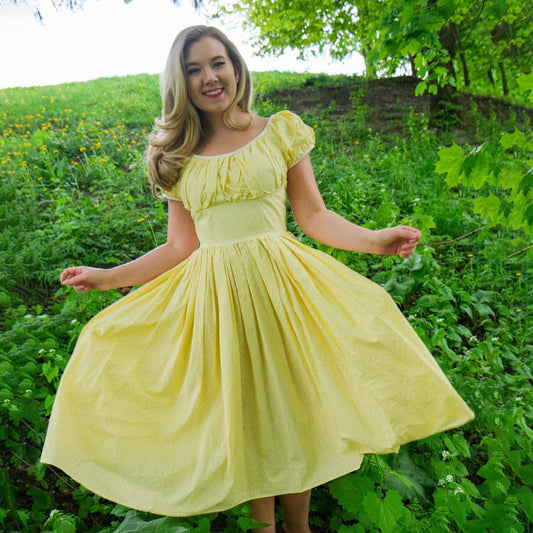This guide will help you understand the essentials of sewing patterns for dresses, from choosing the right pattern to assembling your final garment.
1. What Are Sewing Patterns?
Sewing patterns are templates used to cut fabric pieces that will be sewn together to create a garment. They come with detailed instructions to guide you through each step of the construction process, ensuring that your final product is professional and well-fitting.
2. Selecting the Right Pattern
When choosing a pattern, consider your sewing skill level, the type of dress you want to make, and the fabric you plan to use. Beginners should opt for simpler patterns with fewer pieces and straightforward instructions. As you gain confidence and experience, you can tackle more complex designs.
3. Popular Dress Patterns
- A-Line Dresses: These dresses are fitted at the waist and flare out towards the hem, creating a flattering silhouette suitable for many body types.
- Sheath Dresses: These form-fitting dresses follow the contours of the body, offering a sleek and elegant look.
- Wrap Dresses: Featuring a front closure that wraps around the body and ties at the waist, these dresses are versatile and adjustable.
- Maxi Dresses: Long and flowing, maxi dresses are ideal for a relaxed, bohemian style.
- Shift Dresses: Simple and straight-cut, shift dresses are loose-fitting and comfortable, perfect for casual wear.
4. Understanding the Pattern Envelope
The pattern envelope provides crucial information about the pattern, including:
- Pattern Number: The unique identifier for the pattern.
- Size Range: The sizes included in the pattern.
- Recommended Fabrics: The types of fabric best suited for the pattern.
- Notions: Additional items needed, such as zippers, buttons, and thread.
- Illustrations: Images of the finished garment and technical drawings of each piece.
5. Preparing the Pattern
Before cutting your fabric, it's important to prepare the pattern:
- Selecting the Right Size: Use the measurement chart on the pattern envelope to find your size. Remember, sewing pattern sizes often differ from ready-to-wear clothing sizes.
- Tracing the Pattern: If you plan to use the pattern multiple times, trace it onto tracing paper to preserve the original.
- Making Adjustments: Customize the pattern to fit your body better. This might involve altering the length, width, or specific areas such as the bust, waist, or hips.
6. Cutting the Fabric
Lay your fabric flat on a large surface and pin the pattern pieces according to the layout guide. Ensure the grainline on the pattern pieces aligns with the fabric grain for proper drape and fit. Carefully cut along the cutting lines, and transfer any markings or notches.
7. Sewing the Dress
Assemble your dress by following the pattern instructions. This usually involves:
- Sewing Seams: Join the fabric pieces by sewing along the seam lines.
- Adding Darts and Pleats: Shape the garment by sewing darts and pleats as indicated.
- Inserting Zippers and Closures: Add zippers, buttons, or other closures as specified.
- Finishing Edges: Use techniques like hemming and serging to finish raw edges and prevent fraying.
8. Fitting and Final Adjustments
Try on the dress during construction to ensure it fits properly. Make any necessary adjustments before finishing the seams and hems. Press the dress with an iron to achieve a polished, professional look.
9. Tips for Success
- Be Patient: Sewing requires precision and attention to detail. Take your time to avoid mistakes.
- Practice Techniques: Try new techniques on scrap fabric before using them on your dress.
- Use Quality Tools: Invest in good-quality scissors, needles, and other sewing tools to make the process easier and more enjoyable.
Conclusion
Sewing your own dresses using sewing patterns dresses can be a highly rewarding experience. By following the steps outlined in this guide, you can create beautiful, custom-made garments that reflect your personal style. Enjoy the creative process and the satisfaction of wearing something you've made yourself!










